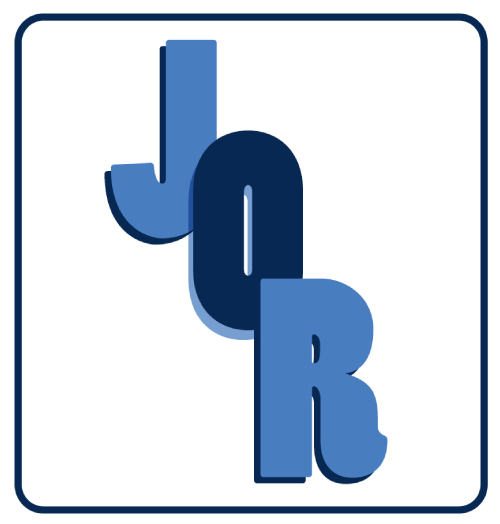Journal of Otolaryngology and Rhinology
Avoidance of Multiple General Anesthetics by Piggybacking Otolaryngology and Pediatric Dental Rehabilitation Procedures
John E Nathan*
Department of Otolaryngology and Dentistry, Northwestern University Feinberg School of Medicine, USA
*Corresponding author:
John E Nathan, Department of Otolaryngology and Dentistry, Northwestern University Feinberg School of Medicine, Chicago, USA, Tel: 630-917-8607, E-mail: jnathandds@gmail.com
J Otolaryngol Rhinol, JOR-2-013, (Volume 2, Issue 1), Editorial
Received: January 28, 2016: Accepted: January 30, 2016: Published: February 02, 2016
Citation: Nathan JE (2016) Avoidance of Multiple General Anesthetics by Piggybacking Otolaryngology and Pediatric Dental Rehabilitation Procedures. J Otolaryngol Rhinol 2:013e
Copyright: © 2016 Nathan JE. This is an open-access article distributed under the terms of the Creative Commons Attribution License, which permits unrestricted use, distribution, and reproduction in any medium, provided the original author and source are credited.
This editorial takes a critical look at one aspect of healthcare which involves interaction between the fields of otolaryngology and pediatric dentistry. Not uncommonly on a daily basis each discipline makes use of general anesthesia to complete invasive procedures on young and pre-cooperative children. Myringotomies, tonsillectomies with and without adenoidectomies are commonplace in surgical schedules of hospitals and out-patient surgical centers. Similarly, children below the age of reason or incapable of permitting in-office dental treatment who present with moderate or extensive dental pathology often require general anesthesia in operating theatres. Where physical evaluations and pre-operative assessments include both ENT intervention and dental need, both disciplines are in an optimal position to coordinate their care under one general anesthetic. Under conditions where joint evaluations are not carried out, the need for duplicate admissions for surgical and anesthetic procedures can often result in both excessive cost and children being subjected to an otherwise avoidable second anesthetic and unnecessary care.
Pediatric dentist pre-operative physical evaluation needs to be every bit as thorough as its ENT counterpart. Evaluation of the upper respiratory tree, airway, lymphoid tissues, potential or occurrence of apneic concerns in addition to the clinical and radiographic evaluation of tooth decay need occur.
ENT pre-operative evaluation should explore dental pathology, visible and/or radiographic, to determine or rule out any urgency before scheduling its planned procedure.
Over the course of the last 18 months, this pediatric dental specialist has encountered sixteen instances where children under the age of four have been treated for tonsillectomy, adenoidectomy, and/or myringotomy. Each child presented in the dental office within weeks of these surgeries, ten of which presenting with significant and overt dental decay, apparent without need of intra-oral radiographs, and manifesting various levels of limited cooperative behavior and moderate to severe levels of apprehension. Subsequently, twelve were in need of a second general anesthetic; four underwent challenging moderate to higher risk in-office sedation procedures to address his or her dental problem list.
In each case, these findings were unidentified to the parents on physical evaluation prior to their ENT procedures.
A viable, if not safer alternative, had the dental pathology been recognized or anticipated, would have considered piggybacking both dental and ENT procedures under one anesthetic.
Hindsight is always easy. From a parent's perspective, it comes as no mystery that need for a second procedure might have been avoided. From a cost of care perspective, the math becomes problematic as it becomes more and more difficult to secure insurance approval and coverage benefits in these economic times.
The intent of this discussion is to suggest, if not mandate the occurrence of pre-operative consultations from both disciplines prior to scheduling of corrective surgeries where feasible or indicated, or as a matter of prudent routine. It is acknowledged that failure to explore and act on findings outside one's discipline can originate from either discipline.
In a perfect world, all children are dentally evaluated by their first birthday, in much the same manner as recommended for well-baby medical check-ups; regrettably, referral to the pediatric dentist doesn't yet universally occur. Neither non-dentists nor dentists can be expected to discover dental pathology in its earliest stages without radiographic assessment. Clinical inspection alone can often leave the impression of health. Further, early symptoms suggesting need for ENT referral to identify abnormalities associated with abnormal breathing, sleep disorders, or apneic episodes can be missed by the pediatric dentist and non-ENT specialist.
The key message remains to enhance rather than isolate communication between healthcare providers, medical and dental insurance carriers. This may be easier said than done and can be time exhausting; time, however, well spent that proves to be "good medicine". One analysis of obstacles to such includes disruption to surgical scheduling of respective disciplines for joint cases. In the absence of effective communication between disciplines, scheduling can be simplified by reservation of separate operating rooms to coordinate treatment between providers and their busy surgical schedules. Because dental procedures are generally longer in duration and may involve debris into the pharyngeal surgical site, dental generally needs to precede the ENT in sequencing treatment. Having a separate surgical suite circumvents disruption for the ENT surgeon where multiple cases are contemplated for the session.





